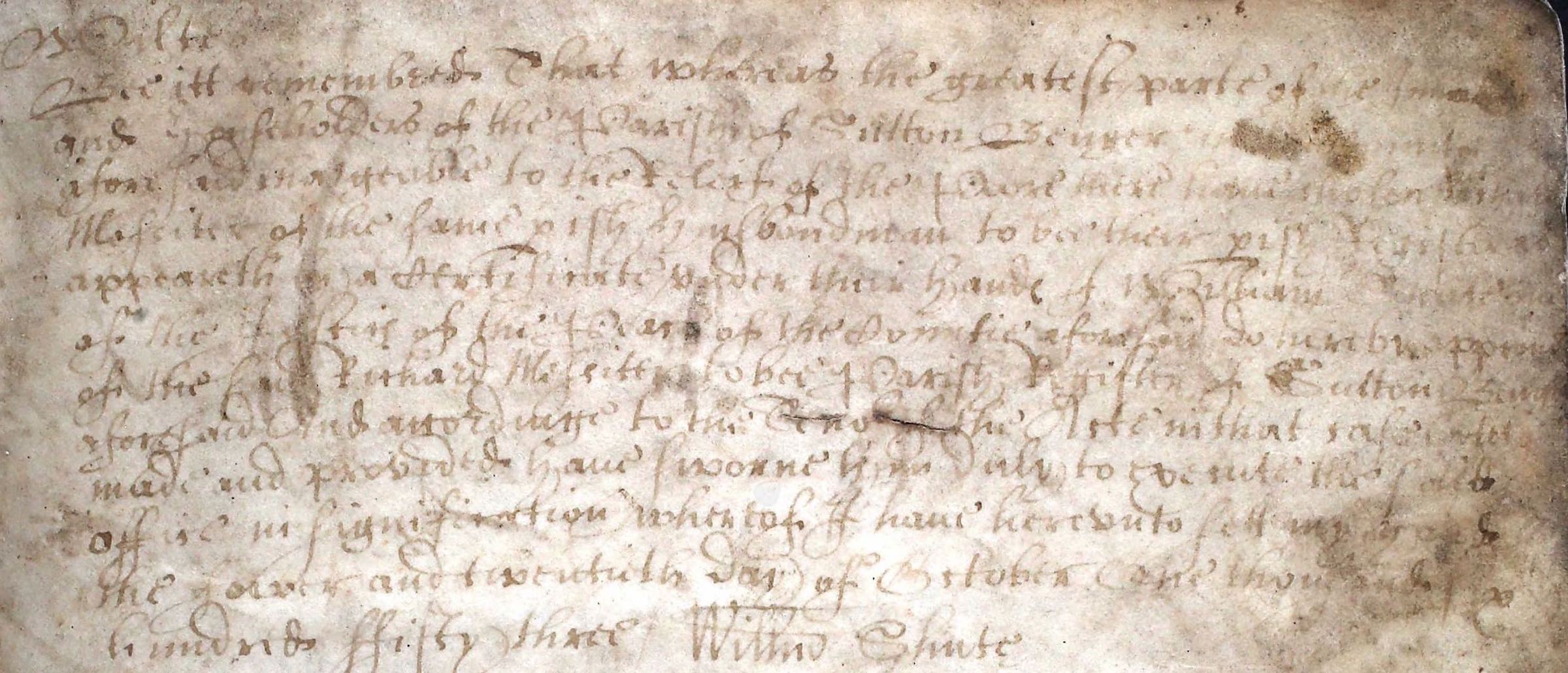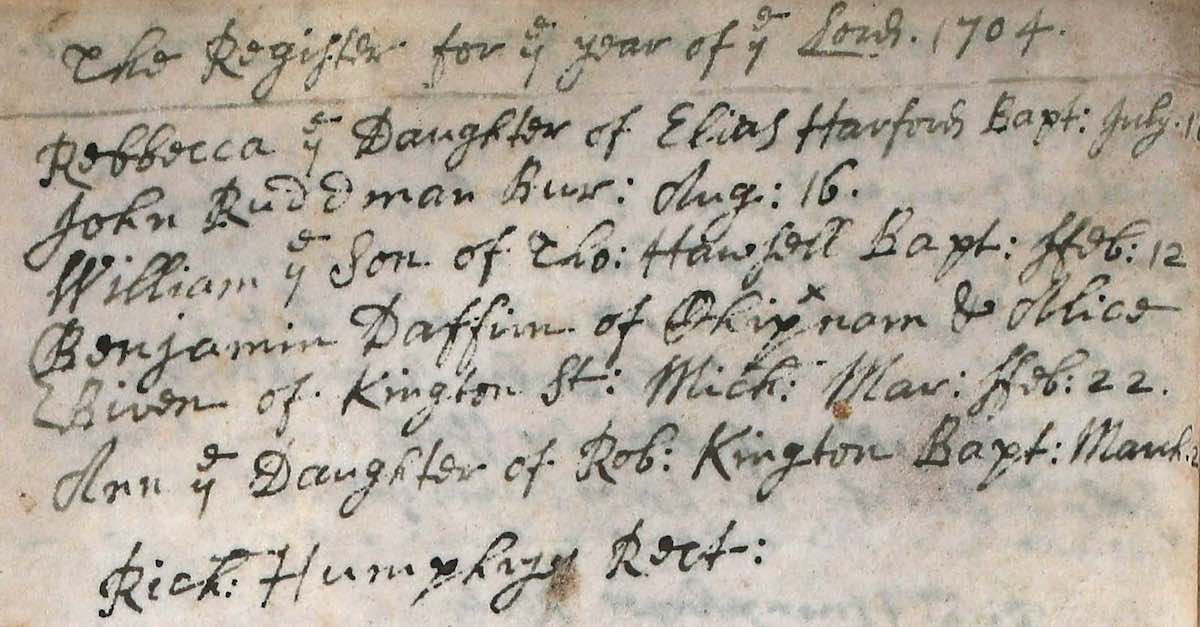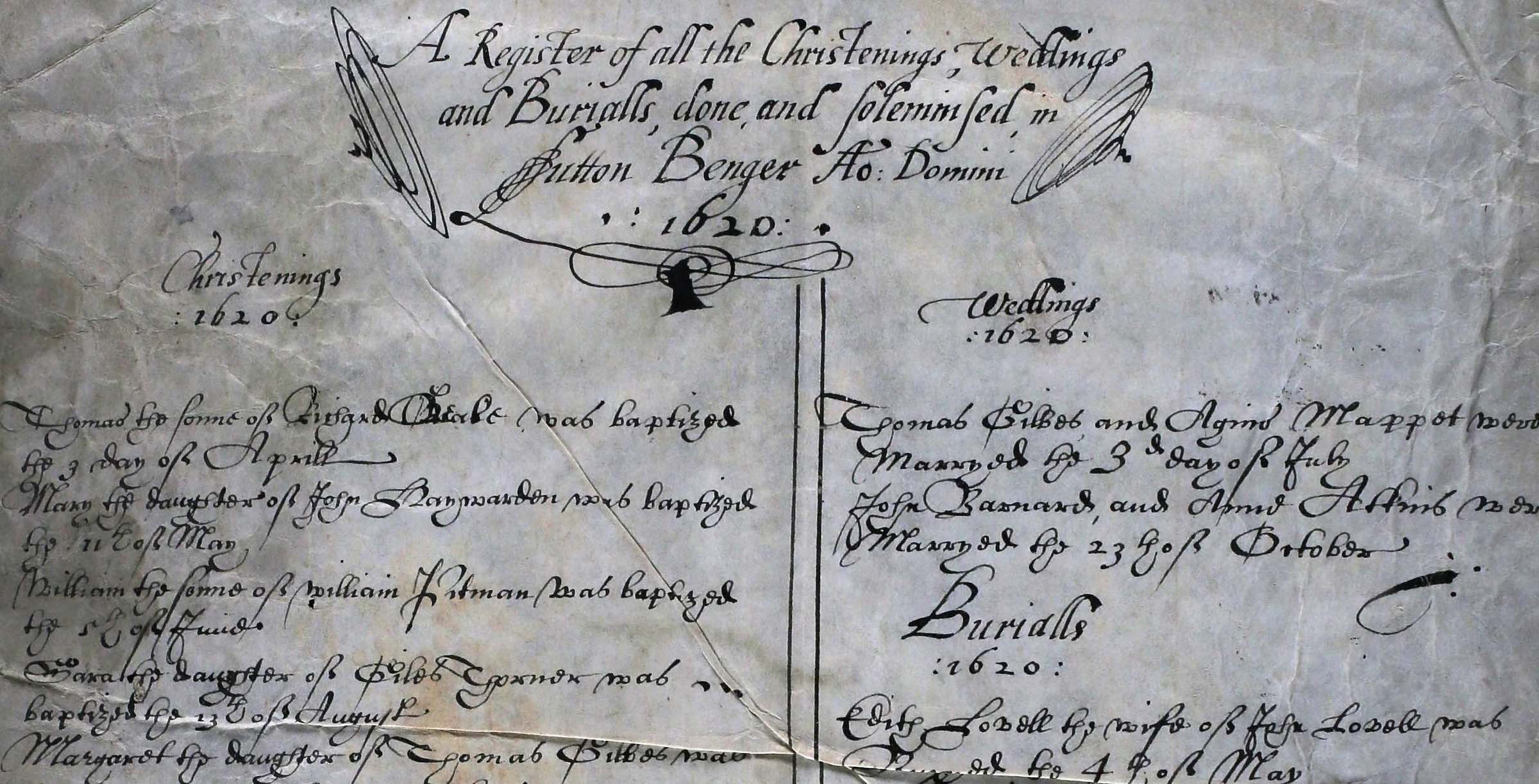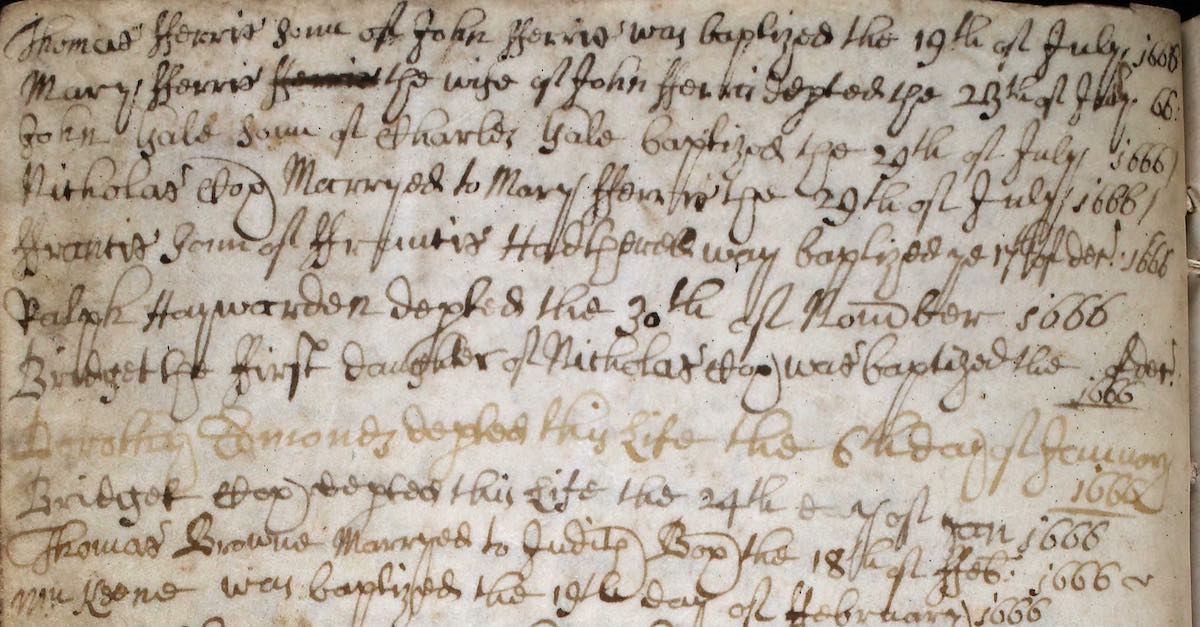Parish Registers and Bishop's Transcripts
Parish Registers
In 1538, Thomas Cromwell, Henry VIII's chief minister, ordered that a record of baptisms, marriages and burials should be kept by each parish. It was the parish priest's responsibility to keep the register. The early Parish Registers were often collections of loose sheets of paper or parchment in various formats, containing all such records; not all parishes started keeping Registers immediately, and many have been lost or destroyed. But in 1754 separate marriage and banns registers were introduced in a standard printed portrait format, which remained in use until 1837, when civil registration began.
From 1653 to 1660, responsibility for keeping registers was transferred to a secular official, who was known as the ‘Parish Register’. He was elected by local ratepayers and approved by a Justice of the Peace (JP). In practice, because rural parishes might not have many literate people able to take on the duties, the role was often still performed by the minister. The parish clerk or churchwarden might also have taken on the role.
The following image shows the affidavit in the register by William Shute, the local JP, appointing William Messiter as the 'Parish Register' for Sutton Benger.

Incumbents and parish clerks varied in ability for spelling, handwriting, accuracy and completeness. There are unpredictable and erratic standards in the accuracy and legibility of the surviving registers, not helped by the fact that people did not have standard ways of spelling their names.
Sutton Benger
The Registers for Sutton Benger survive from 1653/1654; there are occaasional gaps (for unknown reasons). For example, nothing was recorded between July 1873 and November 1874.
Draycot Cerne
The Registers for Draycot Cerne only survive from 1691. The following image shows Draycot Cerne's register for 1704.

Bishop's Transcripts (BTs)
Also, from 1598, copies of all events recorded in the registers were also to be sent to the bishop on an annual basis; these copies, originally held by the diocese, are known as Bishop’s Transcripts (or BTs).
Sutton Benger
About fifteen years from 1605 to 1653 are covered by some surviving BTs for Sutton Benger. The following image shows the example for 1620.

Draycot Cerne
Draycot Cerne has surving BTs for 1601 - earlier than Sutton Benger's, with coevrage for about 20 more years to 1704.
Dates
Until 1752 the calendar year ended on 24 March and the new year began on 25 March. So, the dates 29, 30, 31 December 1678 would be followed by 1, 2, 3 January 1678. And the dates 22, 23, 24 March 1678 would be followed by 25, 26, 27 March 1679. These dates in January-March are normally written today as 'double dates'; for example, the dates in the following image in January and February 1666 would be written today as 'xx February 1666/1667'. The system changed in England in September 1752.

Parish Registers
Discover more articles in the history index.
History Index